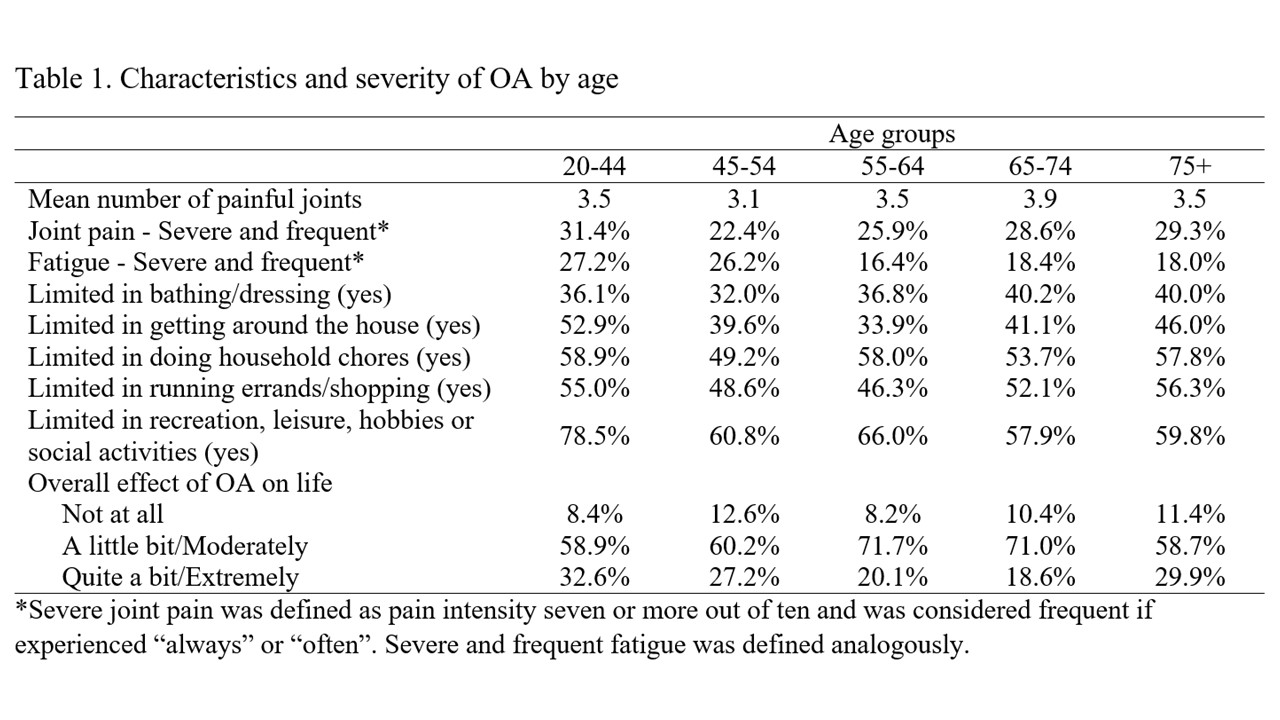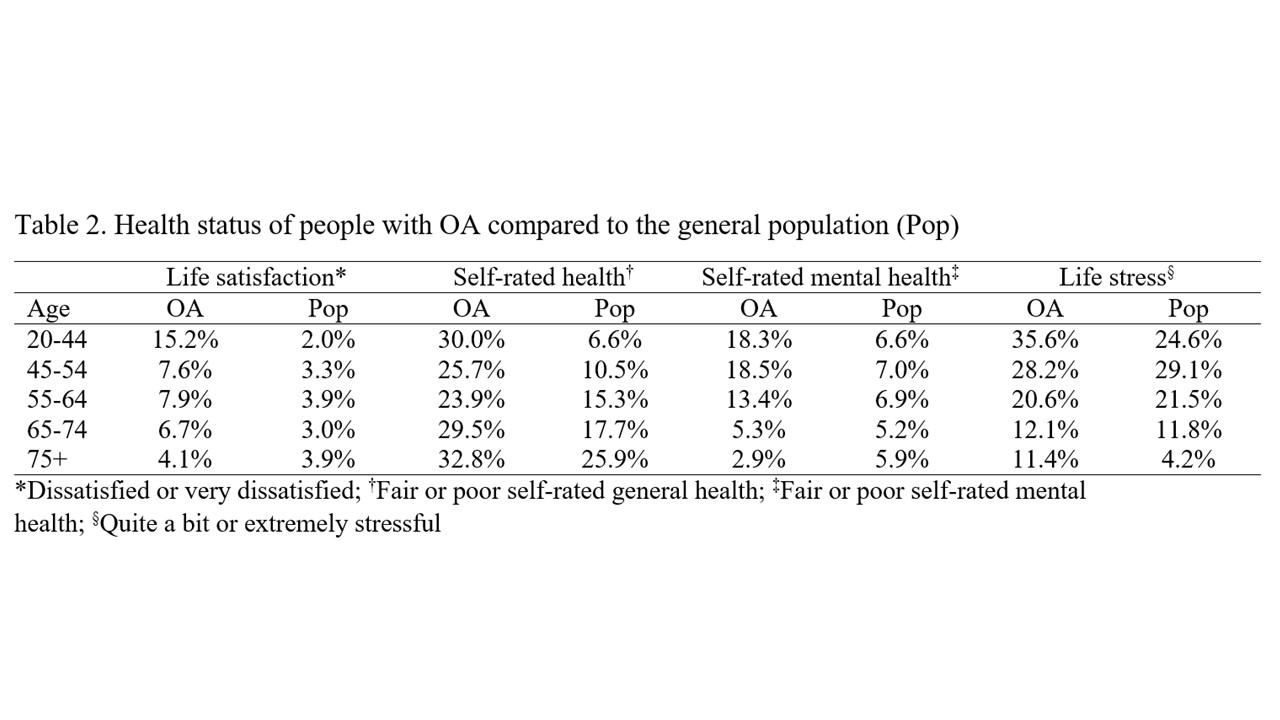Session Information
Date: Monday, November 8, 2021
Title: Epidemiology & Public Health Poster III: Other Rheumatic & Musculoskeletal Diseases (1022–1060)
Session Type: Poster Session C
Session Time: 8:30AM-10:30AM
Background/Purpose: OA is a disease frequently perceived as a disease of the elderly and an inevitable result of aging. Consequently, epidemiological and clinical studies of OA are often restricted to older adults and there is limited information on OA in the younger population. The current study takes advantage of available population-based OA data to describe OA across a wide age range comparing younger and older adult age groups.
Methods: Data source: 2009 Survey on Living with Chronic Diseases in Canada – Arthritis (SLCDC-A), a nationally representative survey of Canadians aged 20+ years who reported diagnosed arthritis in the 2008 Canadian Community Health Survey (CCHS). Analyses were restricted to individuals reporting OA and no other kind of arthritis (n=1614). Comparisons to the general population used CCHS data.
Age categories: 20-44/45-54/55-64/65-74/75+ years. SLCDC-A respondents reported OA characteristics including painful joints in the past month, severity (1-10 scale) and frequency of pain and fatigue, arthritis-attributed limitations in daily activities, and extent to which arthritis affected their lives. Both SLCDC-A and CCHS respondents also reported their life satisfaction and physical and mental well-being.
Results: The average age at diagnosis of OA was 50 years: 30.4% were diagnosed before the age of 45. At the time of the survey 27.1% of respondents reporting OA were younger than 55, with 7.2% aged 20-44 years.
The characteristics of OA for the younger and older respondents were remarkably alike, with a similar number of reported painful joint sites and similar proportions with severe and frequent joint pain, and most activity limitations (Table 1). Younger individuals were more likely to report having severe and frequent fatigue and being limited in recreation, leisure, hobbies or social activities.
The proportion of individuals in the 20-44 and 45-54 age groups reporting that their arthritis affected their life quite a bit/extremely was similar to those in the 75+ year age group. Overall, only 10% of respondents with OA reported that their OA had no effect on their lives.
Compared with the general population, in the 20-44 age group those with OA had a nearly 8-fold higher proportion reporting low life satisfaction; a nearly 5-fold higher proportion reporting low self-rated general health; and a nearly 3-fold higher proportion reporting low self-rated mental health (Table 2). Differences between individuals with OA and the general population were considerably smaller among older respondents.
Conclusion: OA is not an uncommon experience among young and middle aged adults in Canada, despite the frequently held perception that it is a condition predominantly of older people. Findings for young and middle aged adults in this study are likely to represent the initial experience of the disease for a substantial proportion of all people with OA. It appears that irrespective of age, OA is accompanied by a similar degree of symptoms and severity, suggesting that younger individuals with OA live for many years with the ‘full’ consequences of OA. Given the relatively little attention that has been paid to OA in young age groups, more epidemiological and clinical attention is warranted.
To cite this abstract in AMA style:
Badley E, Wilfong J, Perruccio A. Impact of Osteoarthritis in Younger Adults [abstract]. Arthritis Rheumatol. 2021; 73 (suppl 9). https://acrabstracts.org/abstract/impact-of-osteoarthritis-in-younger-adults/. Accessed .« Back to ACR Convergence 2021
ACR Meeting Abstracts - https://acrabstracts.org/abstract/impact-of-osteoarthritis-in-younger-adults/


